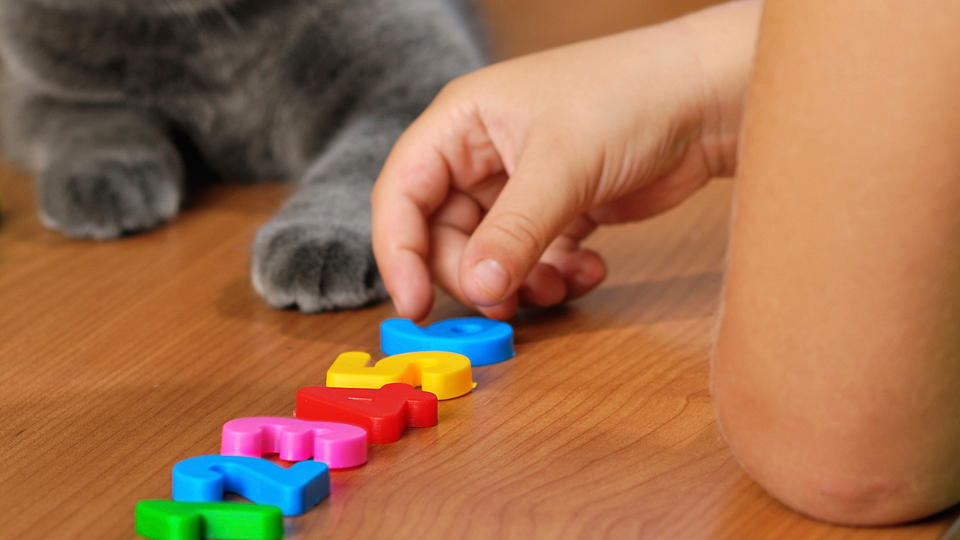The 1-2-3s of math education

Get a better understanding of your children's math education and how to support their efforts.
Learning Stages
"Do not worry about your difficulties in mathematics. I can assure you that mine are still greater."
—Albert Einstein
Nearly everyone struggles with math, whether learning the multiplication tables or trying to figure out how to stretch the monthly income to pay bills. Some find mathematics easier than others, just as some find spelling easier. Some use mathematics extensively in their work, just as some make more use of hammers. Everyone, though, uses mathematics daily, and limited math proficiency leads to limited success with the daily challenges of our society.
New standards of math
Each school has its own mathematics program and expectations, but most are aligned with state curriculum frameworks or guidelines that are, in turn, strongly influenced by national standards. National standards were developed for math by the National Council of Teachers of Mathematics (NCTM, see http://www.nctm.org/standards/).
The NCTM standards reflect five general goals:
- that all students learn to value math;
- that students become confident in their own abilities to do math;
- that they learn to solve mathematical problems;
- that they learn to communicate mathematically; and
- that they learn to reason mathematically.
Students must learn basic math skills and concepts as in the past, but schools give increased attention to connections and applications of math to the workplace and the demands of daily life. Today, children learn that mathematics is a tool that can help them understand the world around them.
What our children are learning
You probably remember studying "arithmetic"—adding, subtracting, multiplying, and dividing—when you were in elementary school. Now children are starting right away to learn about the broad ideas associated with math, including problem-solving, communicating mathematically, reasoning and number sense. Use the NCTM website to understand the concepts that appear in elementary school math books and classroom instruction today.
How will math look in your child's classroom?
As a result of the recent effort in mathematics teaching to include understanding in the teaching of math, from basic through advanced levels, the picture of your child's math class may, indeed, look different from what you remember when you were in school.
- Children will learn their math facts with an understanding of how facts relate to each other.
- Children will learn that math is much more than arithmetic (knowing the facts and number operations); they will be actively involved in the study of mathematics and doing tasks that involve investigations. Children will be talking and writing explanations for their thinking.
- Teachers will use many different ways to determine if children know and understand math concepts. Some of these will include writing samples, projects or written tests.
- Children will use calculators, not as crutches, but as tools to solve more complex problems with bigger numbers than they could do otherwise.
- Children will use computers to develop databases, spreadsheets and computer graphics, while solving problems.
Help your child achieve in math
- Positive attitudes about math will reinforce encouragement. Your feelings will have an impact on how your children think about math and themselves as mathematicians.
- Set high standards for your child in math. Make sure your child is mathematically challenged and encourage his or her interest and pursuit of math.
- Help children see that math is very much a part of everyday life. From statistics in sports to the sale price of clothing, from the calories in food to the amount of gas needed to travel from one city to another, math is important to us every day.
- Point out that many jobs require math. From the scientist to the doctor, from the plant manager to the salesman, from the computer programmer to the hardware store owner, many jobs require a strong foundation in math. Help your child see that math leads to many exciting career opportunities.
- Stimulate your child's interest in technology. Encourage your child to use calculators and computers to further learning.
- Play games that help children develop decision-making and mental math skills. There are many games sold commercially, such as board games, that involve patterns and probability. Consider also games from your own family traditions (counting games and games that keep score), as well as schoolyard games (jump rope, hopscotch and jacks). All these games require children to use strategies to make decisions, solve problems and develop an understanding about numbers and how to use them (number sense) and computational skills.
Start now to help your child achieve in math.
Source: Adapted from Helping Your Child Learn Math, U.S. Department of Education.








